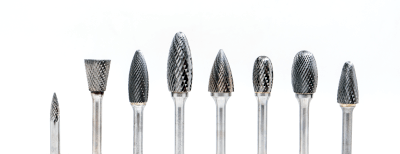What Is a Carbide Bar?
 Carbide bars, or cemented carbide rotary bars, are tools used in conjunction with rotating equipment like grinders for cutting and other operations. Made of cemented carbide, these bars are extremely hard and typically employed for cutting tough materials such as carbon steel.
Carbide bars, or cemented carbide rotary bars, are tools used in conjunction with rotating equipment like grinders for cutting and other operations. Made of cemented carbide, these bars are extremely hard and typically employed for cutting tough materials such as carbon steel.
Each carbide bar comprises a shank (handle) and a blade (cutting edge), where the shank size must be compatible with the grinder. There are various blade shapes available, like tapered and spherical, to suit different applications.
Uses of Carbide Bars
Carbide bars are commonly used for deburring and finishing, shaping the surfaces of workpieces. They are particularly effective for hard materials like stainless steel and titanium alloys, which are challenging to process with standard rotary bars. Specialized carbide bars, like cross-cut ones designed for titanium alloys, feature grooves in a crosswise pattern for efficient cutting.
Principle of Carbide Bars
The blades of carbide bars are classified into spiral-cut, cross-cut, and aluminum-cut types. The spiral cut, also known as a single cut, has a simple spiraled blade. The cross-cut combines right-handed and left-handed spirals, crossing over each other. Aluminum cutters, similar to spirals, have deeper and broader grooves to prevent clogging from soft materials like aluminum, plastic, and rubber.
Different blade shapes, from cylindrical to bullet and conical, cater to specific tasks. For instance, cylindrical shapes are great for flat surfaces but less effective for rounded contours. Selecting the right carbide bar for each specific task is crucial for optimal results.